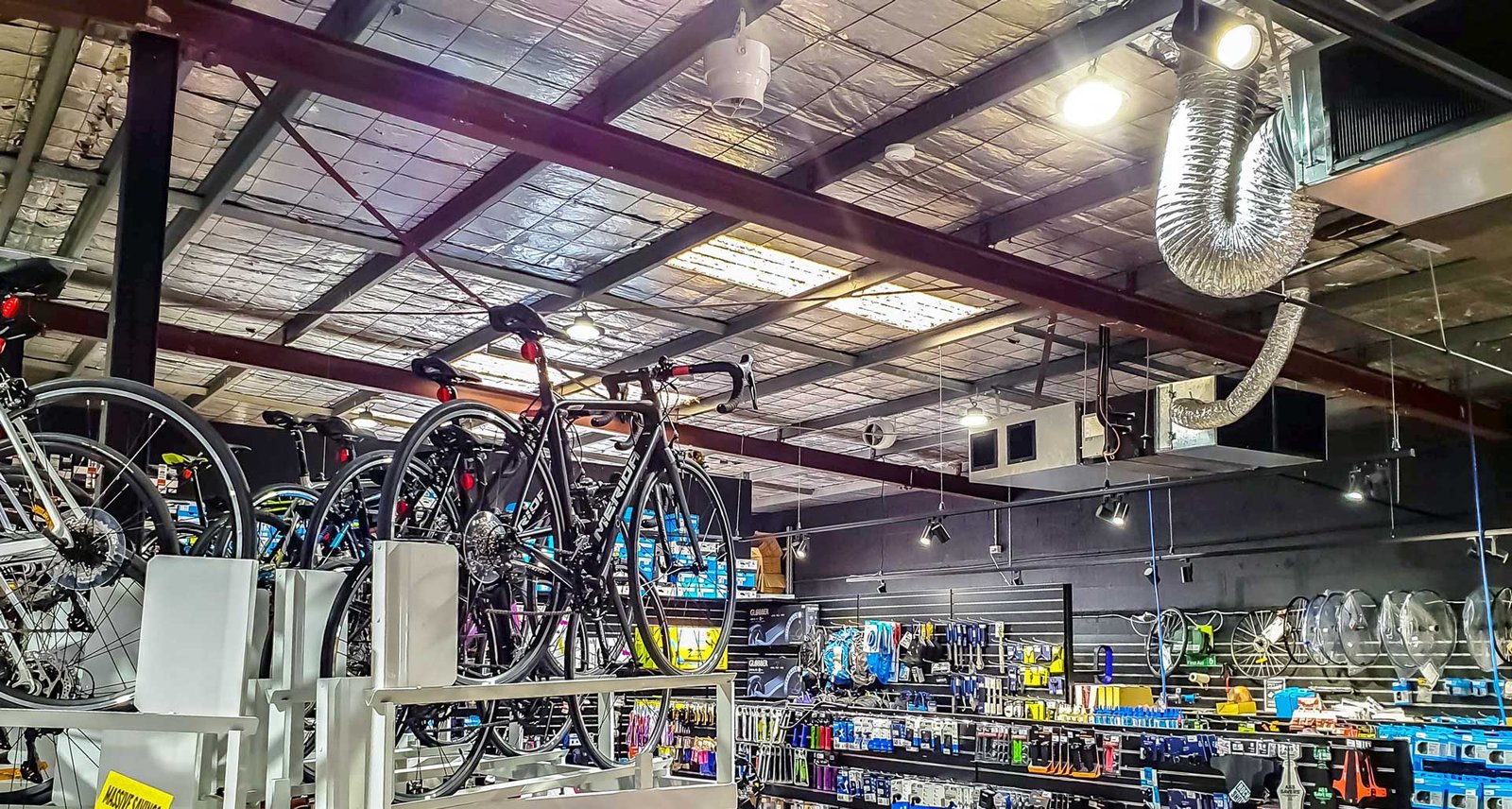
We have been in detailed discussions lately with a range of mechanical engineers and architects around Australia, about embracing the innovative concept of air conditioning without ductwork. Initial conversations are of course, challenging, as the concept is anathema to standard building design. I mean, how would you effectively distribute air around a space without ductwork?
Well, it is possible to achieve, and Airius have, for example, recently installed projects in large air-conditioned supermarkets in both the UK and USA, where there was either no ductwork utilised or there was only a small amount, primarily as a main spine duct centrally located in the space.
In both cases, branch (or even central) ductwork, registers, dampers etc. and related electrical/BMS services were removed.
In one application, the conditioned air was simply delivered just above head height out of one wall using a large grille.
Now in both these facilities, this concept was used in an open ceiling type installation between 5-8 metres high. Both were spaces varying between 1,500 -2,000 sq. metres in size but the concept, if properly engineered, could apply to any size space. This means the idea could be applied to a whole range of building types such as air-conditioned factories, warehouses, sports halls, offices, theatres, museums etc. Any open space or one with low height walls, shelving or corridors that is air conditioned, could benefit.
Now the users of these systems are some of the biggest supermarket chains in either country and it has opened up a whole new world of opportunity for them. A very cost-effective world.
Of course, the question is asked, what are the benefits of doing this and the answers are many and valuable.
 If we remove or minimise ductwork think of the cost savings: –
If we remove or minimise ductwork think of the cost savings: –
- Significantly reduced ductwork supply and install costs
- Significantly reduced commissioning costs
- Optimised lighting layouts to perfectly suit the application
- Significantly reduced services clashes
- Optimised sprinkler layouts
- Increased ceiling height
- Less ceiling clutter
- Less cleaning of ducts, internally and externally.
- Less maintenance
- Less dust collection
- More open and aesthetic ceiling spaces
And very importantly, significantly reduced fan sizes in the AHU. Less ductwork requires less fan static pressure. This results in even lower capital and running costs to the client.
Remember, if you remove or minimise the ductwork your AHU is now only delivering air to either one wall or one or two main ‘spine’ ducts.
So, if we consider all the benefits above and allocate a cost to them, what are we looking at as far as cost savings compared to a typical ducted air-conditioned system?
Of course, there a lot of variable such as chiller types, climate, building loads etc. but would a 30% reduction in capital cost be a reasonable assumption in a building above 1000 sq. metres? Or 40%. You are the engineers, you know what the cost savings will be.
And then we have running costs.
How much cheaper will a non-ducted or minimal ducted (but meant to be ducted) system be to run? Is that another 30% less than a standard typical system, or 40%?
Now for architects, this could be a dream come true. No ductwork and all its issues to deal with. All the constraints and design coordination needed is, almost gone. Services engineers, all the coordination and clashes for them are significantly minimised too.
Seems like reduced design /coordination costs are now also on the table.
So, we have digested the benefits and possible value of removing or reducing ductwork in your air-conditioned space. Of course, one lingering and obvious question remains.
How do we distribute the conditioned air if we don’t have ductwork?
This is where the expertise of Airius comes in. Fifteen years of moving air vertically or horizontally over long distance without ductwork, in thousands of different building types, has provided the data and design capabilities to work with engineers and clients and offer a solution.
Known as a ‘ductless duct’ in the USA, and patented as a Thermal Equalizer®, the Airius Air Pears have been utilised in these innovative examples noted above, to effectively circulate and distribute the air evenly around the space, providing air conditioning without ductwork.
The unique Airius ability to move air effectively, in a narrow-focused column, while ensuring that air is destratified/mixed at floor level, (not at the discharge point as found in cheaper, copycat types of units or large bladed fans) and effectively distributed around the zone creating even air/ temperature mixing, ensures the designed A/C system using Airius units, will work.
Airius have undertaken the studies to prove this, hence the concept being adopted by these large supermarkets.
In the UK and USA installations, Airius Air Pears were strategically located around the zone by the Airius engineers in conjunction with the customer’s design team. The Airius Air Pear air turbines ensure that the supplied conditioned air is mixed evenly. The units, designed to run 24/7, work continually to gently move, destratify and circulate the air, ensuring that required temperatures are achieved across the zone.
The Airius units in an 8 metres high space in this application, are only consuming between 15-32 watts each unit, which is hardly any electrical draw at all. The major grocery companies who have utilised this new concept have undertaken detailed temperature monitoring to prove the concept and are so happy they are rolling it out across their new stores. The cost savings and numerous other benefits are just too much to ignore.
Now, before we progress this discussion, there are some key constraints to the information provided above.
In both those applications, the primary requirement was heating and the Airius Air Pears have been shown to achieve air mixing in a heating application almost perfectly.
Now the sceptical or risk averse engineer or architect here in Australia is understandably going to ask…..
‘Well, how can we prove this idea before we go to our clients with this concept, especially for the cooling side?
So Airius undertook some CFD testing to see how air conditioning without ductwork would all work in a facility like the one shown on the right…
In CFD Testing undertaken in Australia by Dr Colin Allison from the CFD specialists Simultude, said….
“…in a heating environment in an open plan 1600 sq. mts, 6-metre-high space, using one central spine duct and optimised location of Airius Model 25 Air Pears around the zone, (at 10 metre centres) almost perfect air mixing @16 Deg C. was achieved at 1.5 metres high.”
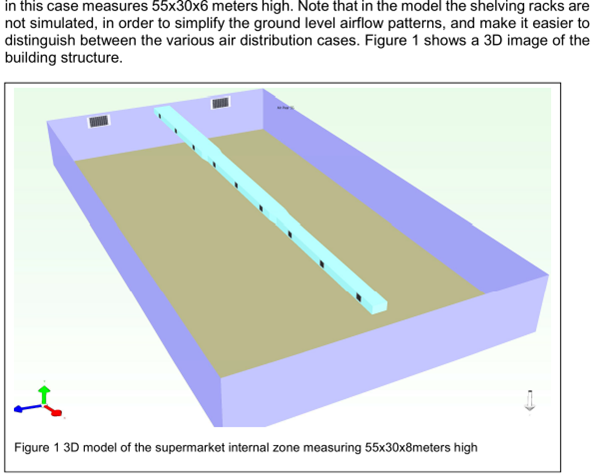
Heating mode with central supply air duct only
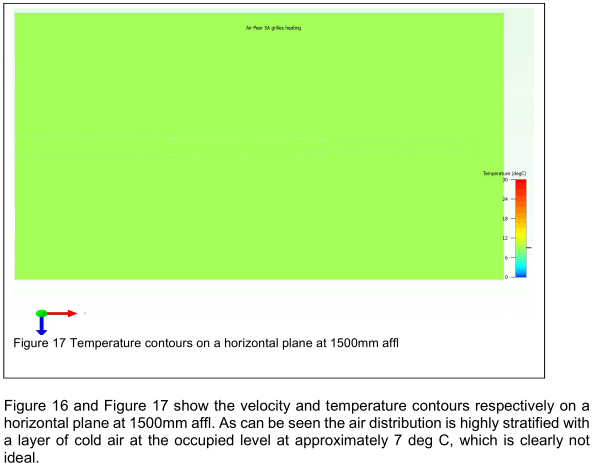
After install of Airius Air Pears at 10 metre centres
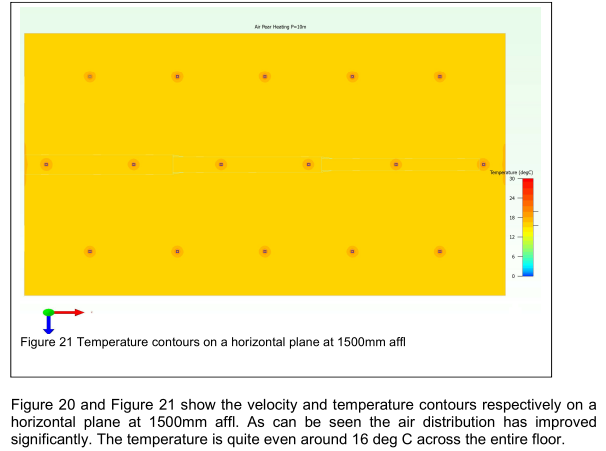
Compared to the air mixing using just a typical spine duct, the outcome was even better than hoped for. It’s close to perfect!
But what about for cooling? What is the air distribution like for cooling?
We also ran a CFD model using Airius Model 25’s mounted horizontally this time, to grab the 12-degree C. chilled air from the duct and circulate it around the space. The outcome was very, very good. Not perfect, but significantly improved over a typical central spine duct design or duct sox delivery system.
Please note also that the air delivery velocity was also, significantly less when using the Air Pears. (1m/s) More energy savings!
The Air Pears did the distribution, not the AHU Fan – Air Conditioning Without Ductwork
So, the savings in both capital cost and energy are significant.
See the before and after temperature graphs below for air mixing at 1.5 metres.
Cooling mode using central supply air duct - before Air Pears
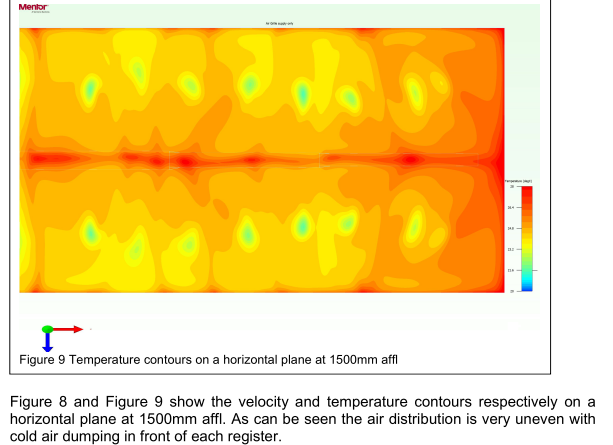
Cooling mode using central supply air duct -after Air Pears

Now we know this result wasn’t perfect and further work needs to be done on model selection and placement in the cooling mode, but the key is that the concept worked, showing a lot of promise, intriguing our colleagues and demanding we undertake further research so we can offer an alternative methodology for reducing A/C capital and running costs.
In addition, we note that improved outcomes for passive and active chilled beams can be achieved with this methodology.
Airius understand this innovation won’t work in every application, and we will need to work with clients and consultants to fine tune this solution, but the CFD testing has shown the value and opportunity of using Airius units to provide the air distribution and significantly minimise ductworks and related costs.
This is what dealing with Airius, as an engineering company, offers. A range of insights and value around air flow and engineered solutions to help you approach your clients with innovation and cost savings.
Below are the conclusions from Dr Allison’s report using only one central spine Supply Air duct.
‘The Air Pear fans work very well in a heating mode, even at a relatively wide spacing of a 10m. pitch. This is because any hot buoyant stratified air creates a reservoir of warm air which, if the fans are within this layer, they can effectively deliver it to the floor level’.
…..‘If the fans are arranged in a horizontal discharge arrangement, which is not typical for this type of fan, then they can be used as an effective SA distribution system in cooling mode.
The central duct SA velocity can be reduced to low levels since the SA register or Ductsox aperture does not have to have long throw distances.
If the fans are placed in the vicinity of the SA registers, then they can effectively entrain the cold SA air and propel it towards the enclosure perimeter. In this study two rows of fans were used to distribute the air. It may be possible to reduce the number of rows, especially if a larger fan model is selected’.
We would love to hear your comments or feedback as an engineer, architect or client, Could this idea work for you? Does it have potential in any of your projects.?
If you would like to find out more about this exciting new Airius® initiative of air conditioning without ductwork, talk to us about it, or if would like a copy of this CFD report to better understand how Airius can help you save your client’s money and improve design outcomes with this great concept, contact us today on +61 1300 985 552 or email us directly at ‘info@’.
We look forward to your interest.




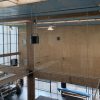

A well-informative article about air conditioning without ductwork, hoping to read more of your work.
Thanks! :)
We continue to plan on publishing regular articles like these on both our blog and in our regular email newsletters.
If you’d like to sign up to receive our newsletter please visit the link below:
– https://confirmsubscription.com/h/j/0BDE908188B3DCDF
Should you have any questions at all please feel free to contact our helpful sales staff direct on 0406 585 402, or by email at sam@. Should you wish to contact our main office please find our contact details on the contact page of the website.
Kind Regards – The Airius Team
This is an explosive idea; this is most probably the best and most successful thing about air conditioning a building without ductwork. I love this blog and really happy to come across this exceptionally well written content. Thanks for sharing!!One must check this Comfortgroup.co.nz it gives us more info on this topic.
Thank you for your comments. We are glad to hear that you follow our blog and find the articles of interest. As a engineering and manufacturing company at the leading edge of air movement, we strive to produce useful and informative content to educate our market on a wide range of ideas and concepts that optimise comfort, save energy and reduce costs. If you have any other comments or questions which you think may be useful to address in our blog please feel free to get in touch.
Regards, The Airius Team.
I was looking for this information relating to air conditioning a building without ductwork. You have really eased my work, loved your writing skill as well. Please keep sharing more!Come across https://peerlessengineering.com/ and hope you can visit this too to get more information.
“We are happy to hear that you have found the article of help to your current project. If you have any other queries regarding the topic or the building in question please feel free to get in touch by email at info@ or by phone on +61 (2) 6608 2736.”
The Airius Team.
its very informative. Thanks for sharing this post
We are glad you find the article of interest. If you have any questions at all or queries regarding an installation please feel free to contact us at info@ or by calling +61 1300 985 552.
Regards,
The Airius Team